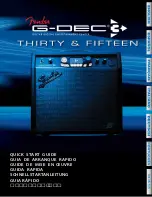
User's Manual | ACOM 500S | 160-4
m Linear Power Amplifier
March 2023
S e c t i o n OPERATION | Page 39 of 66
4.5.
Automatic Protection System
The ACOM 500S control unit (see Section
7.4 Using the Fault Codes (signatures) for Diagnostics
) keeps track of
most amplifier analogue and logic signals in all modes.
Those are for instance the receive/transmit control signal, the output relay contact state and switching times,
the RF drive frequency and drive power (the input power), the final transistors DC current and DC voltage on
the drains as well as, the gates bias voltage and the heat sink temperature, the main power-supply
components temperature, the RF output forward and reflected power, etc. Some derivative parameters, as
the power gain, the SWR, and others, are watched too.
In the event a parameter limit is violated, the amplifier will assess the risk and will trigger one of the three
levels of protection, as described in items (a) to (c) below. Every event is accompanied by a warning text on
the screen (see
Figure 4-4 | Appearance of an alarm message
). A sound alarm will be also produced, if set to ON
Figure 5-5 | Menu USER PREFERENCES
).
Figure 4-4 | Appearance of an alarm message
Figure 4-4 | Appearance of an alarm message
a)
First protection level - WARNING
The first (most forgiving) protection level is WARNING. When a value watched by the control unit approaches
the protection threshold, the transmission is not interrupted, but a warning message appears - for example
"Drive Power too High", "Drain Current too High", or another (see
Figure 4-4 | Appearance of an alarm message
You can continue to transmit in these conditions, but you have to take some measures, for example, to
reduce a bit the drive power from the transceiver. The warnings remain on the screen for at least three
seconds so that they can be read through and will disappear after the reason has dropped off.
















































